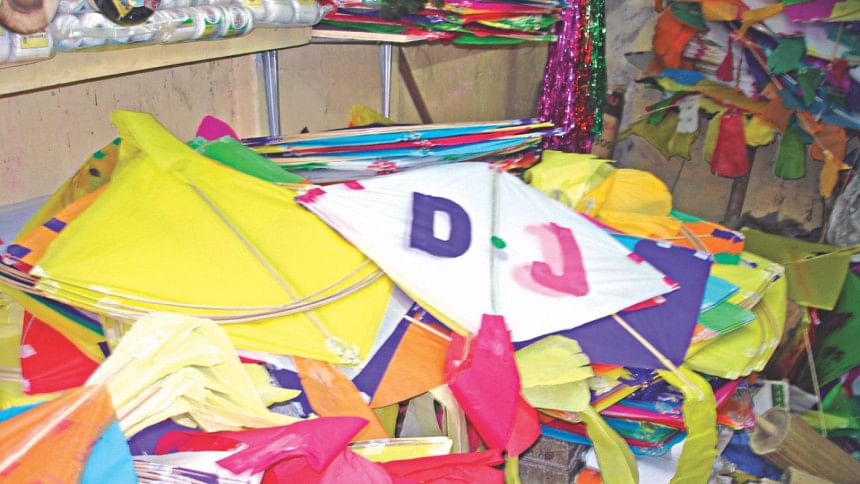Mad about kites!

Etched into the traditions of Bengal, kites have a long and colourful history. For centuries the festive kites have graced the clear-blue skies of the subcontinent, uniting people of various ethnicities. Whether it is in the form of competitive kite wars, or even as decoration during sacred festivals, flying these man-made birds in the sky have always been a source of joy and merriment for people of all ages.
GUDDI
One of the most popular kites of the region, the guddi is usually made of paper or tissue paper. Taller than wide in the ratio 1.2:1, it is perfect for windy evenings. In the wintry mornings, one can often spot amateurs hurriedly making a guddi for a quick kite fight right before going to school. A fancier variation of this type is the snake kite. With a long tail and a rectangular base, this guddi is made to look like a serpent gliding across the sky.
PATANG
Just like the guddi, this is also a fighter kite. The diamond-shaped patang has a height to width ratio of about 1:1.2 with a tiny triangular tissue paper as a tail. The structure of the patang allows it to glide gracefully across the sky, making this ideal for the skilled kite-fighters, who can gracefully manoeuvre the strings from the ground. In fact, they are so low maintenance that you can just put a little scotch-tape over any tear and they will still work, thanks to its ideal geometric construction.
DHAUSH
This oval kite flying in the sky will definitely remind you of the bird itself. Often made for decorative purposes, dhaush kites are much larger than your fighter kites. Modern dhaush kites can even resemble the shape of butterflies or aeroplanes. Skilled kite-makers take this a step further, making the dhop, which is a three-dimensional structure mimicking the flight of jet-planes when it is flying.
CHONG
Made for decorative purposes, the chong kite is usually a trapezium where the lower two sides are smaller by 9 to 18 cm. Bold and mighty, the idea of chong kites come from man's dream of flying since chong kites resemble the shape of human beings. With limbs hanging on both sides of the main structure, a fluttering chong kite can often give the illusion of a man flying in the sky. Bold and mighty, it comes as no surprise that crafting a chong takes longer as a lot of emphasis is given on the art.
DOUL
One of the most common three-dimensional kites, the doul is cylindrical. Hollow in between, the doul is often made of tissue paper. The artists carefully design the sides with bold colours and intricate designs before finally letting it flutter into the air.
FANUSH
The gorgeously lit lanterns that you fly during New Year is actually a form of kites. Possibly one of the few kites for the night sky, the fanush is an improved version of the doul. The body is made of light paper with cotton covering the main bolt. As you light it up, the fanush flies up filling the dark night with fire.
FOR THE WARRIORS IN YOU
To be the best in the game, one must take proper care of not only their kites but also ensure that they have the sharpest string to tactfully defeat the opponents. First, a mixture is made of powdered glass, rice water and other abrasives in which the string is dipped. The string, now called a manja, is then sun-dried. The sharper the manja the higher your chances of winning, but be prepared — by the time you are done, your fingers just might be bleeding!
By Adiba Mahbub Proma
Photo: Mannan Mashhur Zarif

 For all latest news, follow The Daily Star's Google News channel.
For all latest news, follow The Daily Star's Google News channel. 



Comments